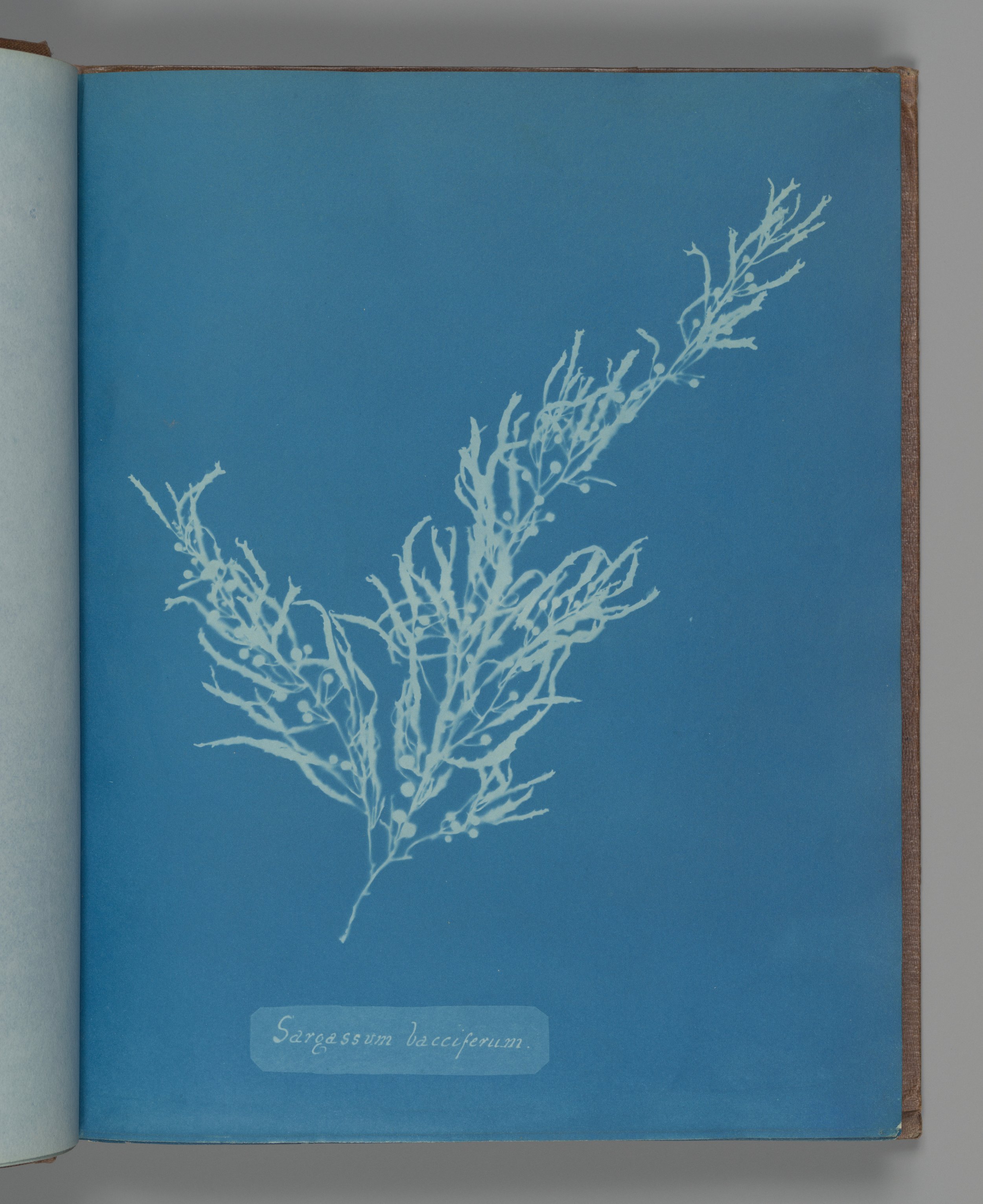Shannon K. Winston
The End of the World with Anna Atkins
—photograph of Anna Atkins attributed to Jean-Baptiste Frénet
Eyes locked on the lens, you stare
into the camera. Your hair,
pulled back, exposes your part
that runs like a crease
down the middle of your head. You’re such
a badass—the way you sit
for centuries just watching me. Patience
and stillness and science
are the vices you keep up your sleeve.
Even the ruffled lace around your neck
and the ribbon on your dress
read snark, read don’t mess
with me. At night, you visit.
We listen to the Indigo Girls
and talk about Galileo. You prefer
R.E.M.’s It’s the End of the World
as We Know It. I ask you about
the world as I never knew it,
when it was laundry fresh,
awash in Prussian blue.
Anna Atkins to Her Cyanotypes
—after Traci Brimhall’s “Love Poem Without a Drop of Hyperbole in It”
I love your white pores, so soft like skin. I love
the small holes in your corners. Like pierced ears,
they let a smidge of light through. The pins I use
to tack you to the walls are silver studs.
I bejewel myself with you—with your blue blue,
with your edgy ferric ammonium citrate.
I love you the way Penelope loved Odysseus,
only I’m more patient. I could wait for forty years, alone
with my specimens. I press each one, so tenderly,
against glass. Love hides in the smallest fibers,
which is why I watch you—hour after hour—
and oil your surfaces, and label each leaf,
stamen, and bulb, because love isn’t sticky
like sugar, it’s hard, so hard and so very precise.
To Anna Atkins’s Sargassum Bacciferum Cyanotype
Against the blue
of my computer screen, I imagine
you’re a shy sprig
that fits quietly
in the palm of my hand.
You’re the pinch
of thyme my mother
used to sprinkle on the surface
of my potato leek soup.
Your leaves are thick,
curved marks on ice. Somewhere,
a stranger skates
across a pond.
For her, the world holds
its breath, as it does for the woman
who, miles away,
gets an x-ray of her breasts.
Her bones are as white
as your leaves
that were never white.
So often, outlines can trick us like that.
Anna Atkins (1799–1871) began making cyanotypes, a recently-invented kind of photograph, in 1843, in order to record and disseminate images of her collection of seaweeds. See Sandi Daniel’s cyanotypes in this issue of Bracken.
Shannon K. Winston's poems have appeared in The Shore, RHINO, Crab Creek Review, The Citron Review, the Los Angeles Review, and elsewhere. Her work has been nominated thrice for the Pushcart Prize and several times for the Best of the Net. Her poetry collection, The Girl Who Talked to Paintings, was recently published by Glass Lyre Press. Find her here: https://shannonkwinston.com/.


